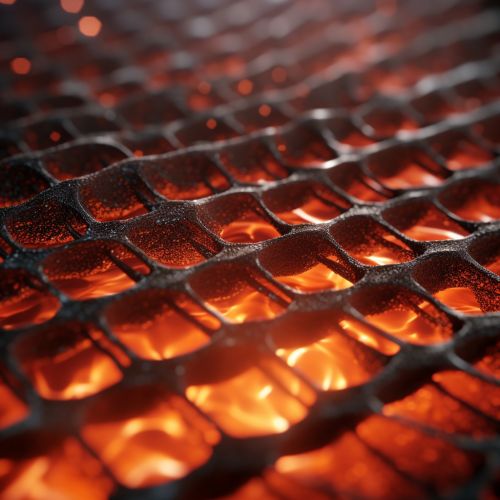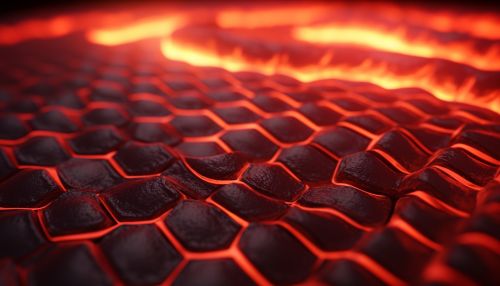Thermal conductivity
Overview
Thermal conductivity is a fundamental property of materials that quantifies the ability of a substance to conduct heat. It is denoted by the symbol 'k' or 'λ' and is measured in watts per meter-kelvin (W/m·K). The concept of thermal conductivity is rooted in the second law of thermodynamics, which states that heat will always flow from regions of higher temperature to regions of lower temperature, given the absence of work being done.


Fundamental Principles
Thermal conductivity is a transport property that describes the rate at which heat energy moves through a material due to a temperature gradient. It is a key parameter in many engineering and scientific applications, including the design of heat exchangers, insulation materials, and electronic devices.
The thermal conductivity of a material depends on several factors, including its composition, structure, and temperature. For instance, metals, which have a regular lattice structure and free electrons, generally have high thermal conductivity. In contrast, gases and insulating materials, which have disordered structures and few free charge carriers, typically have low thermal conductivity.
Mathematical Representation
The mathematical representation of thermal conductivity is given by Fourier's Law of heat conduction, which states that the rate of heat transfer through a material is proportional to the negative gradient in the temperature and the area through which heat is transferred. Mathematically, this is expressed as:
Q = -k*A*(dT/dx)
where Q is the heat transfer rate, A is the cross-sectional area through which heat is transferred, dT/dx is the temperature gradient, and k is the thermal conductivity.
Measurement of Thermal Conductivity
Several methods can be used to measure the thermal conductivity of a material. These include steady-state methods, transient methods, and non-steady-state methods.
Steady-state methods, such as the guarded hot plate method and the heat flow meter method, measure the steady-state heat transfer through a sample. Transient methods, such as the hot wire method and the laser flash analysis, measure the time-dependent temperature response of a sample to a heat pulse. Non-steady-state methods, such as the thermal needle probe method, measure the temperature response of a sample to a continuous heat source.
Applications of Thermal Conductivity
Thermal conductivity plays a crucial role in a wide range of applications. In the field of building and construction, it is used to design insulation materials that minimize heat loss or gain. In electronics, it is used to manage the heat generated by electronic devices and prevent overheating. In the field of energy, it is used to design and optimize heat exchangers used in power plants and industrial processes.
